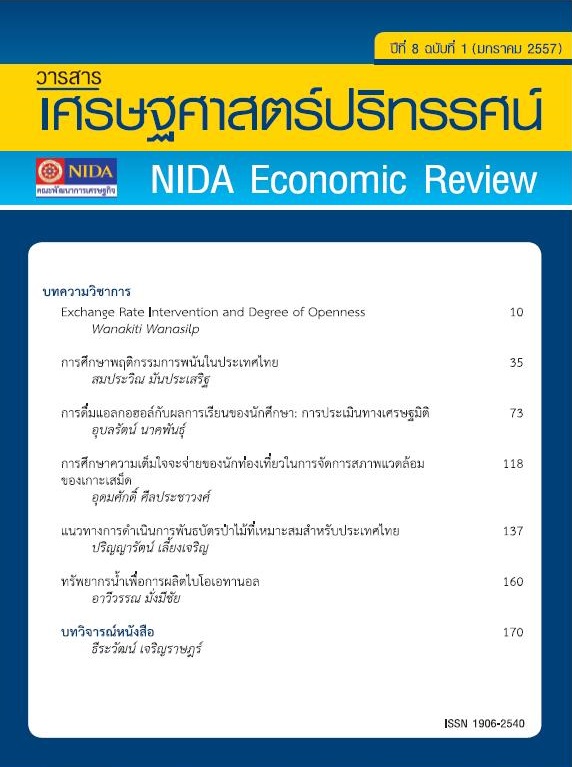Exchange Rate Intervention and Degree of Openness
Keywords:
Exchange Rate Intervention, Degree of Openness, General EquilibriumAbstract
Since most of existing literature analyses exchange rate intervention in a partial
equilibrium framework, implying that the spillover effect of the intervention on other
sectors is ignored, in this paper, however, the problem will be posed under general
equilibrium setting in which the spillover effect of exchange rate intervention will be
taken into account. Using degree of openness as a proxy for the spillover effect of
exchange rate intervention, it is postulated that, with high degree of openness, the
spillover effect of the intervention is beneficial since it will further help stabilizing the
whole economy. Hence, with high degree of openness, the optimal exchange rate
band to be narrower than the one with low degree of openness, signifying the central
bank’s bias toward more intervention rather than floating of exchange rate. With high
degree of openness, large portion of GDP is accounted for by international trade
transactions. Therefore, stabilizing international trade sector via exchange rate
intervention will have positive spillover effect by helping to further stabilize the whole
economy. Exchange rate intervention should be, therefore, beneficial for a country in
which degree of openness is relatively high.
Downloads
Published
Issue
Section
License
Copyright to published manuscripts becomes the property of the Graduate School of Development Economics, National Institute of Development Administration. Reproduction of all or part of a Development Economic Review (DER) article by anyone, excluding author(s), is prohibited, unless receiving our permission.
Disclaimer: Opinions expressed in articles published in this journal are those of the author (s) and do nto necessarily represent opinions of the Graduate School of Development Economics, National Institute of Development Administration. Trade and proprietary names are only for identification and not constitute our endorsement.


